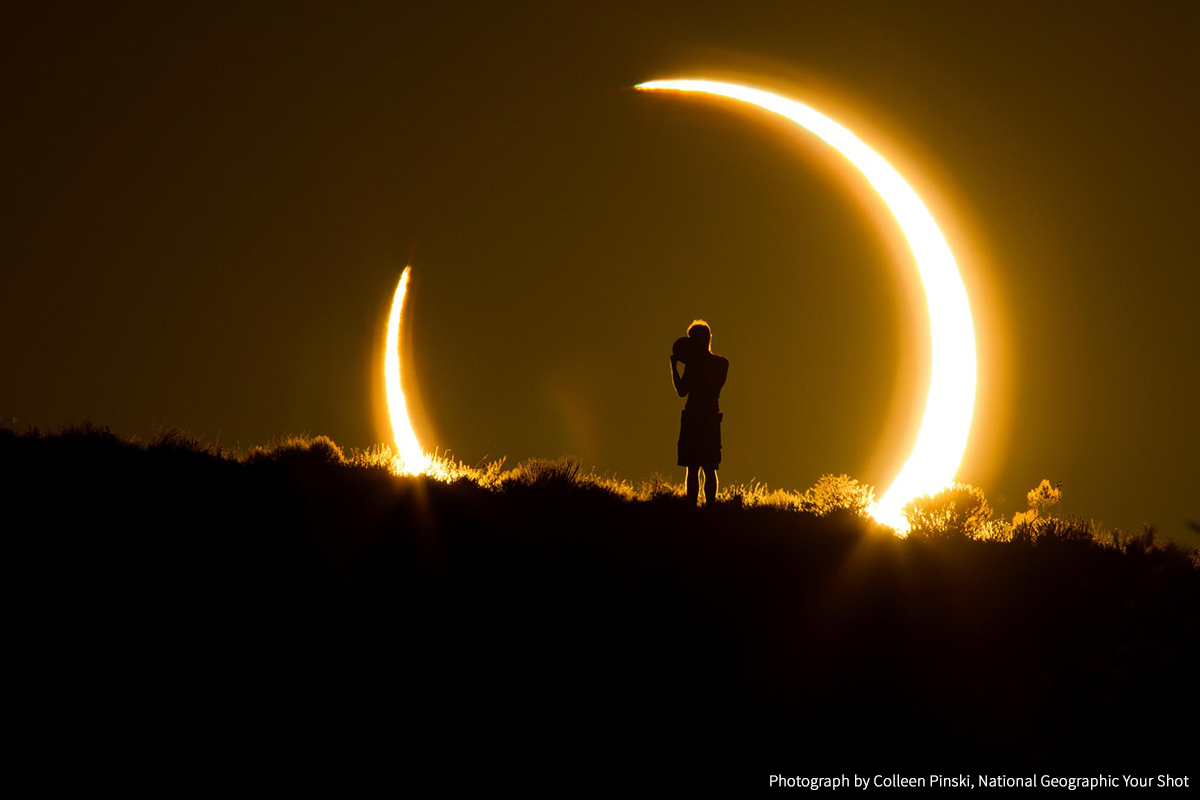On August 21, 2017, at 2:48pm, Eastern Standard Time, North America, and parts of South America, Europe, and Africa will have the opportunity to enjoy a partial solar eclipse. However, those on the path of totality, encompassing 14 North-American states will enjoy a total solar eclipse, wherein the moon completely covers the sun. As amazing as this will be to witness, it does require specific safety measures to protect your eyes during this event. Proper eye safety will help ensure you will be able to see after the eclipse is over. Improper eye safety can cause total blindness.
Why Does a Solar Eclipse Require Specific Eye Safety?
The truth is, it is never safe to look directly into the sun. On the average day. Most people do not make it a habit of staring directly into the sun. Typically, if they catch a glimpse, they quickly glance away, being careful not to damage their eyes. However, during a solar eclipse, you are watching the sun intently. This means you are staring directly at the sun for as long as it takes for the eclipse to occur. This may be long enough to cause what is known as solar retinopathy. This condition occurs when the sun’s UV rays and bright light actually flood your retina, leading to blindness. Since this is a condition that can easily occur if you continually stare at the sun, eye safety must be a consideration during the solar eclipse, an event in which you are purposefully staring at the sun for an elongated period of time.
Viewing Options for Ultimate Eye Safety
There are several options that allow you to view the solar eclipse while adhering to eye safety rules. One option, perhaps among the easiest options, is to watch it live on television or your computer. You may even choose to watch this through a pinhole camera’s screen, wherein the camera is staring at the sun and you are staring at the picture. This allows you to view the event close up without exposing your eyes to harmful UV Rays. Another option would be to watch the solar eclipse through a telescope with a solar filter, allowing you to stare directly at the sun, as if you are only a few feet away and not being exposed to the sun’s harmful rays.
Of course, many people want the experience of standing outside and staring at the sun until they see the total or partial eclipse. There are events planned around this exact phenomenon, allowing this to be about science and fun! There is a way to enjoy the solar eclipse live and in person, while adhering to the rules of eye safety. Standard or prescription eye glasses are not the answer and will not protect your eyes from the harmful UV lights. However, there are special glasses that you can purchase or obtain from any local eye doctor. If, for some reason, you choose to purchase these glasses through the internet or a third party supplier, make sure they follow specific standards. They must be compliant with the ISO 12312-2 International Safety Standards. Also, make sure they are not scratched, cracked, or damaged in any way. If you find yourself with a pair of solar eclipse viewing glasses that do not meet these standards or are damaged, get rid of them immediately and find another method in which to watch the solar eclipse.
If you are as excited to watch the solar eclipse as we are, let us know on our Facebook page!




